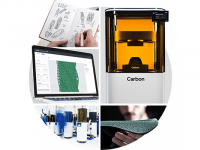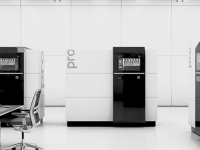Maturing Simulation and Test Capabilities for the Digital Twin
Companies must embrace the digital twin concept to remain competitive, and embrace leading-edge simulation and testing tools that exploit the digital twin

October 8, 2019
The boundaries between design and the product life after delivery are disappearing. This trend will transform product development from a process that delivers discrete generations into a continuous process that keeps track of individual products and constantly updates them until end of life.
Within the last few years, a convergence of various technologies is transforming engineered products in many different industries. What are these trends? You know them well if you are involved in any capacity with bringing new products to market that require significant engineering development – cars, planes, machinery and medical devices to name just a few.
Consider the potential of new materials to transform the relation between form and function, new manufacturing processes that make it possible to produce shapes that were never before possible, the integration of software and electronics to improve performance, and the possibilities that Internet of Things (IoT) data can afford to satisfy customer needs in new ways. Apart from these, there are the trends for mass personalization, greater demand for fuel efficiency, and more regulations including the mandate to reduce emissions.
The net result of all these is an increase in complexity of both products and the processes that are used to engineer them. The challenges resulting from this increased complexity are significant. Longstanding companies with rich histories of innovation in one area may struggle to leverage their experience in emerging fields.
Will a company that knows how to build mechanical locks lead the way to internet-connected devices that can be locked and unlocked from a smartphone? Or will they watch helplessly as new companies take away market share? How will they integrate their experience on the mechanical side with newly acquired knowledge on sensors, electrical actuators and internet connectivity to bring new products to market faster than upstarts? If a company is not thinking of these types of questions, it will surely be left behind in just a few short years.
There is a way forward and it requires a mindset to embrace the concept of digital twins. But before we outline the way forward, let us examine some of the trends and challenges in a little more detail.
Fill out the information below to download the resource.
Latest News






